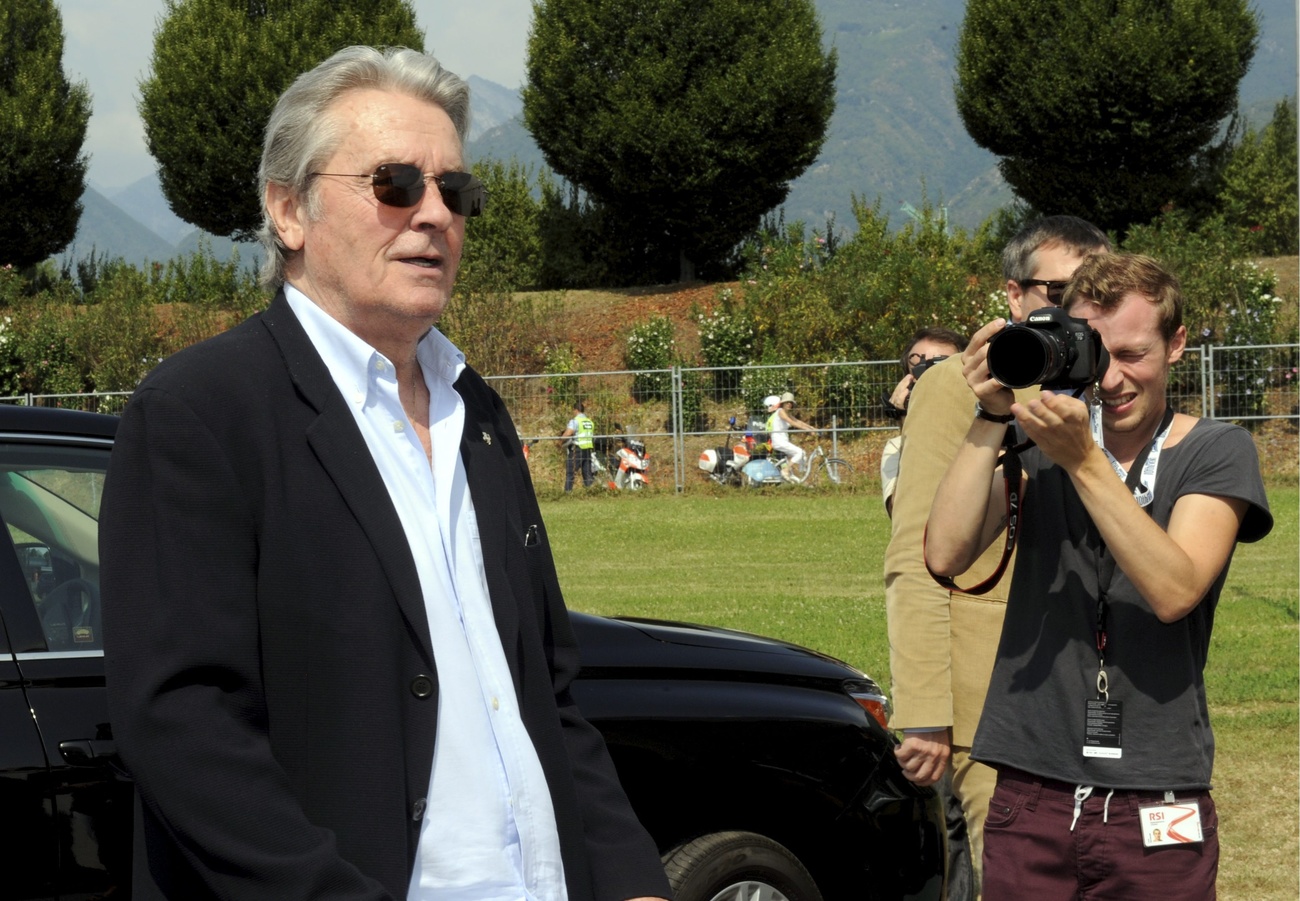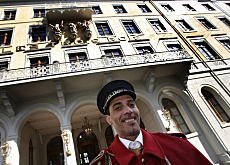Building grand hotel comes at a price

One of the most expensive hotel projects ever in Switzerland is taking shape. swissinfo got a sneak preview of the SFr420 million ($337 million) Dolder Grand in Zurich.
The British star architect, Norman Foster, is transforming the old hotel overlooking the Swiss financial centre into a state-of-the-art city resort.
One expects to find craftsmen applying mortar to cracked sandstone walls or scraping away decades of grime and grit to reveal fanciful paintings.
But one-and-a-half years before the Dolder’s reopening, the 107-year-old hotel is a shell of its former self – a thin skin slipped over a monstrous concrete body. Only the façade with its signature turrets, the ornate “Steinhalle” lobby, some of the ceilings and about a dozen of the guest rooms are being preserved.
“Basically, it’s a new building,” Beat Sigg, CEO of The Dolder Resort, told swissinfo after a visit to the construction site.
There was little left of the original Dolder to save, according to Peter Baumgartner of canton Zurich’s office responsible for the preservation of monuments and historic buildings.
Baumgartner said continual structural alterations made over the years meant only “vestiges” were left of the original hotel, and current fire safety and noise protection standards required that much of the three-wing building be gutted and started over again.
The authorities gave the go-ahead for the annexes added in the intervening decades to be demolished. The hotel’s foundation was also removed to make way for a spa, restaurant and a maze of underground passages.
Logic
Yet neither Foster nor the Swiss financier Urs Schwarzenbach, who purchased the property in 2001, has sought a faithful restoration.
The architect’s firm says the intention is to “restore much of the original logic to the building [by] re-establishing circulation routes and the old south entrance with its panoramic views”.
The addition of a curved structure, which wraps around the 19th-century centrepiece on three sides without touching it, will provide a “lively interplay between the old and new”. In the middle is a domed ballroom. Modern, luxury rooms and suites will fill the two V-like wings at each end.
Even the hotel’s energy concept is futuristic. Seventy geothermal probes sunk 150 metres beneath the foundation will reduce the hotel’s environmental impact by providing one million-kilowatt hours of clean energy a year to meet half the building’s heating needs.
Big name
Managing director Thomas Schmid says it is impossible to take on such a project nowadays without bringing a big name architect on board.
“It’s the first time Foster is building something in Zurich,” Schmid told swissinfo. “You cannot do anything nowadays without a well-known architect. Even small European cities such as Valencia hire well-known architects. It’s important for the city of Zurich, and the authorities are very much aware of this.”
But using Foster as a calling card, and the stated aim of turning the traditional hotel into one of the world’s best, comes at a price.
Around SFr160 million was originally budgeted for the “radical restructuring”, as it has been called by Foster. A further SFr100 million was soon needed, and by the end of 2005 that figure was raised to SFr300 million.
Then Schwarzenbach announced earlier this year that he would have to come up with another SFr100 million.
Conflict
The larger the amount of money and the bigger the names, the greater the potential for conflict. Instead of having to tend to demanding guests, Schmid has had to mediate between a strong-willed architect, designers, interior decorators and a billionaire owner.
“People always fight for their values. But at the end of the day it is to be a hotel and not a museum and we will be running it, so it’s important that someone from the management team is on board who can influence the decision-making process,” he said.
It is not yet known whether more money will be needed to complete the project, but one thing is certain: the union representing construction workers is not happy with present salaries.
According to posters stuck up around the construction site, the union is demanding a four per cent pay rise for all members across the country.
swissinfo, Dale Bechtel in Zurich
The Dolder Grand Hotel opened its doors on May 11, 1899.
It was a state-of-the-art, turn-of-the-century hotel, boasting two lifts, a telephone and telegraph service.
A golf course was added to the property in 1907 and a heating system was installed in 1915 which enabled it to be open all year round.
The first major alteration took place in 1924 when a restaurant complex was added to the front. The entrance had to be moved to the rear of the hotel.
A 60-room wing was added in the 1960s.
Estimated cost of the reconstruction: SFr420 million.
The hotel is due to reopen as “The Dolder Grand” in early 2008.
It will have 174 rooms and suites, a spa, two restaurants and ballroom.
Adjacent to the hotel are tennis courts and a nine-hole golf course.
Overlooking Zurich, the lake and Alps, the hotel is reached from the city by rack railway.

In compliance with the JTI standards
More: SWI swissinfo.ch certified by the Journalism Trust Initiative











You can find an overview of ongoing debates with our journalists here . Please join us!
If you want to start a conversation about a topic raised in this article or want to report factual errors, email us at english@swissinfo.ch.